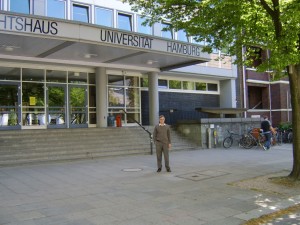 In a response to a contribution on Thursday last week Sylvia Hammond mentioned a number of disruptive activities that is causing serious damage to all private learning providers, such as making use of anyone else’s training material or intellectual property without the permission of the originator, obtaining material and not paying for it, employing facilitators and not paying for their services, taking money and not providing the materials or service. This made me decide to write about something that has been bothering me for a long time already.
In a response to a contribution on Thursday last week Sylvia Hammond mentioned a number of disruptive activities that is causing serious damage to all private learning providers, such as making use of anyone else’s training material or intellectual property without the permission of the originator, obtaining material and not paying for it, employing facilitators and not paying for their services, taking money and not providing the materials or service. This made me decide to write about something that has been bothering me for a long time already.
I am currently reading a book with the title How South Africa Works and Must do Better, written by Jeffrey Herbst and Greg Mills. They wrote that, when unhappy, trade unions strike, the government make new laws and businesses invest offshore and stop employing people. In a nutshell, everybody seems to use disruption to get their way.
This article is about how disruption impacts on the achievement of National Skills Development Strategy (NSDS) and National Development Plan (NDP) strategic objectives and how role players in ETD misuse and protect themselves against the disruption.
It is not wrong to use disruption to gain a competitive advantage. However, what is wrong is when the disruption creates more damage than good for the community.
Today many new businesses gain a competitive advantage by offering their customers a new and different business experience. They often use new technology while at the same time setting new standards for expectations, conditioning customers to think differently, thereby offering them a new experience. This is constructive disruption. What we often have is destructive disruption.
The unit standard-based occupational learning qualifications are being replaced by curriculum-based qualifications. So far the new curriculums that I saw are most certainly not an improvement on the old ones. Furthermore, the concept of having learning providers do formative assessment while external bodies are made responsible for summative assessment can, in my opinion, destroy occupational learning in South Africa.
Some private providers and SETAs misuse the confusion about the education and training system to gain a monopoly in certain fields of learning for themselves. For example, private providers will arrange workshops or communicate directly with their clients, telling them that current qualifications are no longer valid and that they offer the replacements, even though the new curriculums are not even registered yet. Or they will disregard the credits for qualifications and offer a one year qualification in 21 days because they know the quality assurance bodies (do they still exist?) can and will do nothing to stop them. Or they “invent” new learning programmes by grouping a number of valid and expired unit standards together and then calling it a fancy name.
It looks like quality assurance bodies sometimes use disruption to dodge doing their work. Applications for accreditation are lost, they deny ever receiving it, ask for the same materials again, set new criteria halfway through the process, give negative feedback without even reading the applications. Accreditation, that should not take longer than five days, takes as many as five years.
Then there are those who sell “fully aligned” learning materials at prices that are so low that the person who purchases the materials should have known that it is a hoax – they actually get what they deserve. The learners, however, are stuck with the disruption.
More damaging than even students who riot, set campus buildings and works of art on fire, destroy monuments, etc. are people who pay or accept bribes.
I can continue sighting examples of disruption in private and public learning that will make you weep. Well, not really because I am sure you all know what is going on. The point is; if the quality assurance bodies, the government departments, organised labour, private and public learning institutions and the industry continue disrupting the educational system for any reason other than to promote and protect the interests of the learners, the entire system will eventually collapse.
In closing, dust the ring binders off in which you filed the NSDS and NDP and see how many of the strategic objectives listed in them will never be achieved because of the disruption of the ETD system.

 Many learning institutions often resist quality assurance of education and training because of the attitude of quality assurance bodies; excessive demands on the time and funds of the universities or colleges; the perception that such bodies violate the academic autonomy and freedom of the learning institutions, fostering a compliance culture; managerial and political intrusion in academic matters as well as fear that quality assurance might damage the good reputation of the university or college. In short, role players in education and training do not trust one another.
Many learning institutions often resist quality assurance of education and training because of the attitude of quality assurance bodies; excessive demands on the time and funds of the universities or colleges; the perception that such bodies violate the academic autonomy and freedom of the learning institutions, fostering a compliance culture; managerial and political intrusion in academic matters as well as fear that quality assurance might damage the good reputation of the university or college. In short, role players in education and training do not trust one another.







 It is interesting to see how different countries or groups of countries adopt different strategies to ensure good quality education, training and development (ETD). Some seem to achieve remarkable success while others just don’t seem to make it, or care. Then there are those where political agendas ruin the ETD system of the country. South Africa currently faces immense obstacles of which many of you are probably aware. In this article I will suggest a strategic approach that should help us perform better. Others might be interested in my suggestions even if only to feel good about how well ETD is conducted in their countries.
It is interesting to see how different countries or groups of countries adopt different strategies to ensure good quality education, training and development (ETD). Some seem to achieve remarkable success while others just don’t seem to make it, or care. Then there are those where political agendas ruin the ETD system of the country. South Africa currently faces immense obstacles of which many of you are probably aware. In this article I will suggest a strategic approach that should help us perform better. Others might be interested in my suggestions even if only to feel good about how well ETD is conducted in their countries.